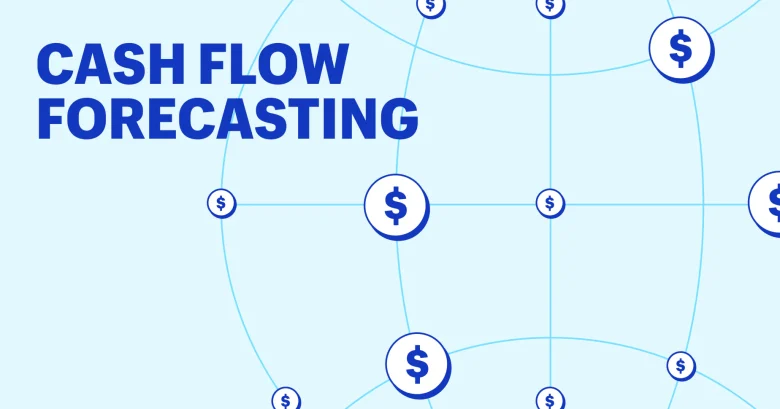Cash flow forecasting is essential for all businesses, no matter their size or industry. Cash flow forecasting gives you a better picture of the financial future of your business and allows you to anticipate cash inflows. This insight is crucial for better decision-making, planning, and ensuring that you have the liquidity you need to cover operational costs as well as unexpected challenges. Understanding how to accurately forecast cash flow can be the difference between thriving or just surviving, whether you are a startup or a large enterprise.
Understanding Your Current Cash Flow
You must first understand your current financial situation before you can accurately predict future cash flows. Analyze all of your income sources, including sales, loans, and investments. Calculate your monthly expenses, including rent, salaries, utilities, repayments of loans, and raw materials. This detailed overview will help you create a cash flow statement that gives a good idea of the financial health of your company.
You can gain valuable insight into irregularities, such as seasonal spikes in revenue or unexpected costs that could affect your future projections, by identifying trends. Your forecasting is likely to be inaccurate and incomplete without a baseline.
Forecasting cash flow: Methods and Techniques
Businesses rely on either the direct or indirect method to forecast cash flow. The method works well for forecasting short-term cash flow. It involves analysing actual cash flows for a given period. This method is ideal for small and medium businesses that deal with simple transactions. It provides an accurate and clear breakdown of cash flows. The method, on the other hand is used to forecast long-term. This method starts with the net profit reported on the income statement of the company and adjusts it for non-cash items such as depreciation or changes in working capital.
The complexity of your business will determine which method is best for you. Combining both methods can often provide a more accurate forecast.
Tools and Technology
The days of manually calculating cash flow forecasts are over. This critical task has been revolutionized by modern technology, which makes it easier, more accurate, and less time-consuming. Automating cash flow forecasting is possible with cloud-based accounting tools such as QuickBooks, Xero, or advanced tools such as Float. These platforms are often equipped with analytics dashboards and real-time tracking of data.
Some tools can also be integrated with your current financial systems to ensure seamless data synchronization and minimize human error. AI-driven tools for forecasting help businesses to anticipate their financial needs as well as the fluctuations of their industry or market. The right tools can improve your forecast accuracy and free up time to work on growth initiatives.
Common Forecasting Challenges
Forecasting cash flow is a valuable tool, but it’s not without challenges. The most common mistake is to base projections on unrealistic assumptions such as overly optimistic revenue growth or underestimated potential costs. Being unable to take into account external factors such as economic downturns or regulatory changes can also be a challenge.
Another factor that can affect the accuracy of financial forecasts is incomplete data. Incomplete data, such as missing payment histories, inaccurate expenses, or unrecorded bills, can distort the numbers, and give a false picture of your cash flow. To avoid these pitfalls, it is important to stay vigilant and use accurate financial records.
Review and Adjust
Forecasting cash flows is not an event that happens once. It’s a process that requires regular revision and adjustments. Cash flow forecasts should be updated to reflect changes in circumstances. If you receive a large contract, obtain a loan or observe an unexpected drop in sales, your cash flow forecast should be adjusted accordingly.
The best practices include reviewing your cash flow projections monthly or quarterly to identify any variances between the projected and actual figures. These reviews can help you identify any gaps in assumptions or data and empower you to correct them in the next forecasting cycles. You can improve your forecasts by using an iterative process.
How to Make Forecasting Work for You
The art of cash-flow forecasting can be a very useful skill. This skill provides you with actionable insights to help you deal with short-term cash flow issues, plan long-term investment, and prepare for any unexpected challenges. Your business can achieve financial stability and clarity by having a good understanding of its current financial state, using the appropriate forecasting tools and methods, and conducting regular reviews.
Still, many business owners find that even with the right framework, forecasting can be overwhelming–particularly amidst competing priorities. Consider seeking the advice of financial experts, or investing in technology to streamline your process. Cash flow forecasting is a key priority for businesses. They often enjoy smoother operations, more efficient resource allocation and greater resilience to market volatility.
FAQs
1. How often should my cash flow forecast be updated?
Update your cash flow forecast at least monthly, if not quarterly. Regular updates will ensure that your projections are in line with current business conditions, and you can spot any trends or issues early.
2. Can cash flow forecasting benefit small businesses?
Absolutely. Cash flow forecasting is a great tool for small businesses. It helps them to manage their limited resources and avoid cash shortages.
3 What is the most common reason for inaccurate forecasts?
A common problem is the use of inaccurate or incomplete information. Inaccurate forecasts can be caused by ignoring factors such as delayed payments, hidden costs or changing market conditions.
4: Is it possible to forecast cash flow using free tools?
Many software platforms provide free or trial versions of their cash flow forecasting tools. Tools like QuickBooks and Xero, for example, offer basic cash flow management tools as part of their affordable plans or free.
5 – How can I select the best forecasting method for me?
Your business needs will determine the best option. Direct method is best for short-term insight. Indirect methods are usually more appropriate for long-term planning.




